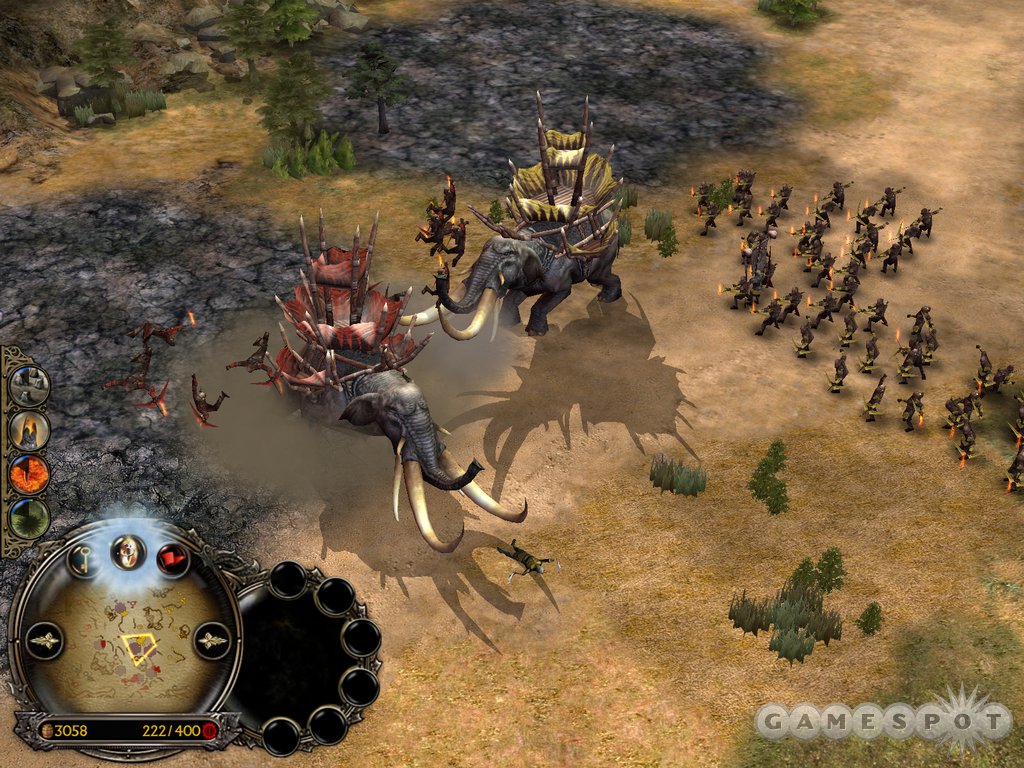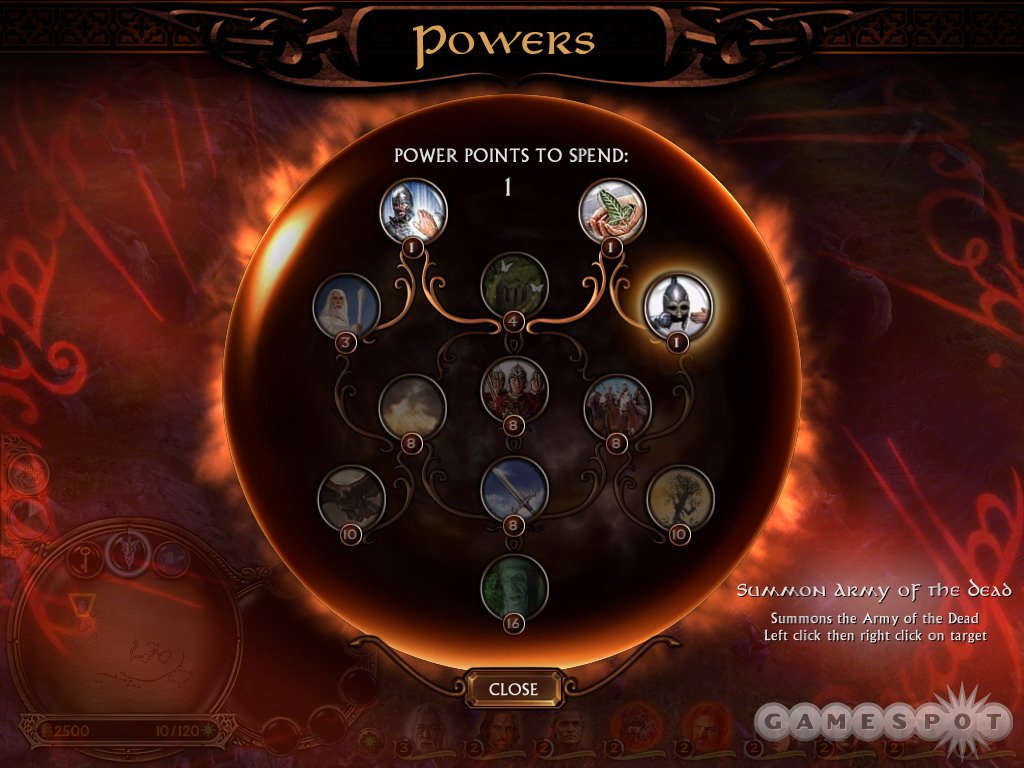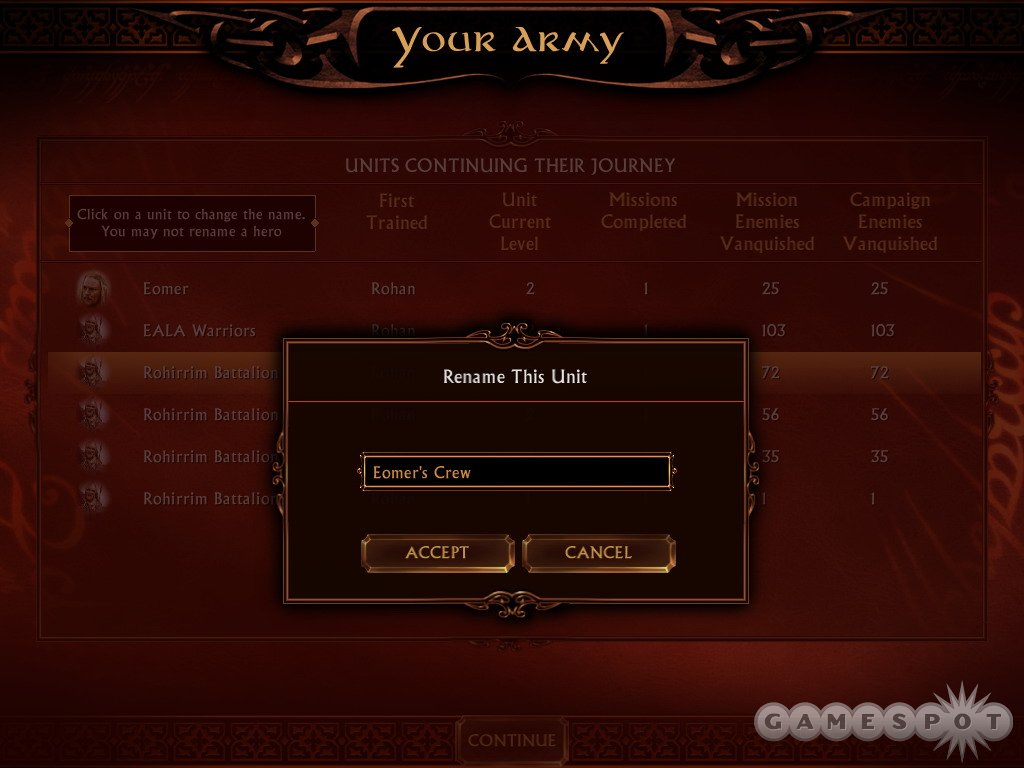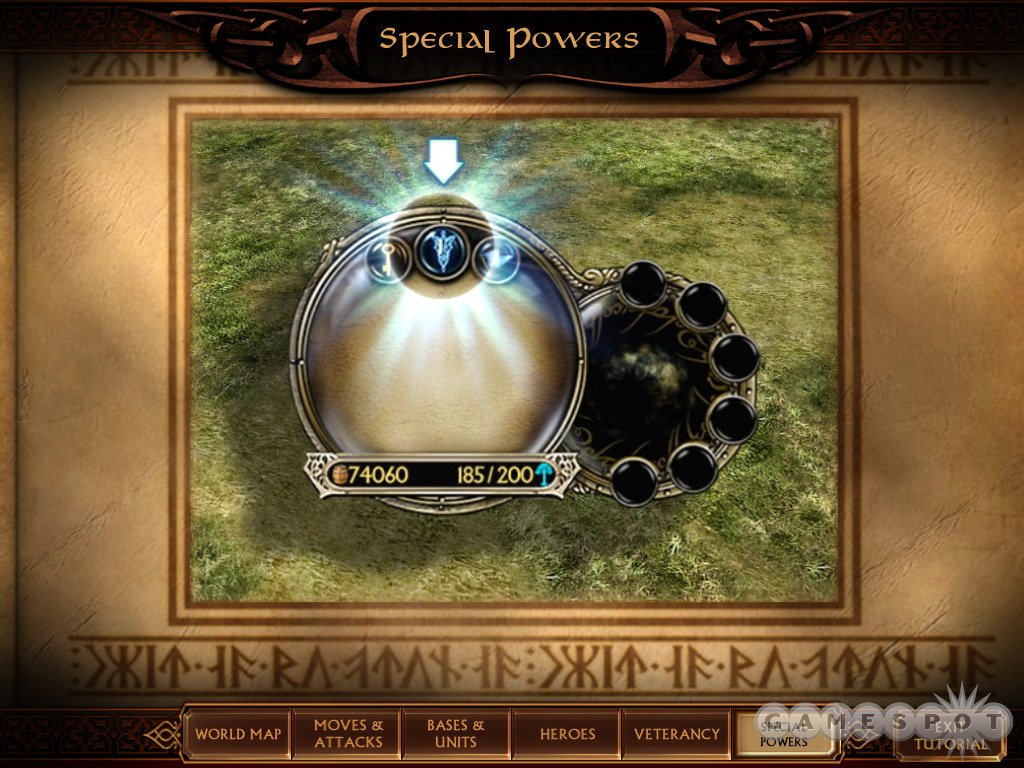The Lord of the Rings, The Battle for Middle-earth Designer Diary #8 - Interface and Final Thoughts
Executive producer Mark Skaggs shares his final thoughts on this upcoming real-time strategy game.
Thanks to games like The Battle for Middle-earth, real-time strategy games seem to be pulling away from the traditional model of "gather resources, construct base, churn out armies of military units, pummel opponent first." The upcoming game will draw inspiration from the smash hit motion pictures that were based on author J.R.R. Tolkien's classic fantasy fiction. And now the game's development is basically done. Executive producer and EA LA vice president Mark Skaggs takes a look back at the game's development.
Polishing the Battle
By Mark Skaggs
Executive Producer / VP, EA LA

By the time you read this, we will have sent The Lord of the Rings, The Battle for Middle-earth off to manufacturing and we will have already started our time off. It's an odd experience to think of that while writing this, but it's good to know that while the game is being manufactured, players will be able to learn more about some of the things we did toward the end of the development cycle. On all games, the last 45 to 60 days of time is spent squashing bugs and adding polish to the game. Rather than spending time talking about the great bug-killing effort from the team, I thought it would be interesting to talk about some of the polish work the team did to make the game even better.
When you come down to the final days of development on a game, sometimes it is difficult for a team to look at the game in an objective and fair manner. It is possible, for instance, for a team to accidentally make the game too hard simply because after playing it for six months, they themselves find it too easy. Additionally, it's not unheard of for a team to be so focused on fixing bugs that they miss out on some obvious polish issues that need to be addressed.
To avoid these types of mistakes, one of the development processes we follow is to try to get as much feedback as possible about the game from people who are not on the dev team. For this game, we collected this feedback through a series of focus groups, by having senior people across EA play the game and by listening to what our testing department had to say. After collecting comments and listening to the feedback, a couple of themes surfaced that we wanted to address.
First, we found that the process for earning and using Evenstar/Ring points (for the game's "special powers") was not as clear as we would have liked. We also found that there were some key features of the game that many players weren't aware of as they played through solo play. Finally, we had feedback that our tutorial mission wasn't working well either as a tutorial or a mission. Looking at the details of these comments, we realized that most of them could be addressed with presentation and using the interface to surface features already in the game. So this is where we focused our efforts.
With the Evenstar and Ring points, the main issue was that players were unclear on how to earn the points and then how to spend them to purchase the special powers. After looking closely at the system, we realized that we had some hidden rules that confused people on how many points could be earned in a mission. The confusion that resulted had the side effect that people were not as excited about earning the power points and then purchasing special powers with them. To resolve this, we set about eliminating the confusion by removing the constraints on how many points could be earned in a mission and instead make earning points solely dependant on fighting battles. Given that this was pretty much just like earning experience points in a role-playing game, we knew players would understand it.

Next we wanted to make sure that players understood how their power points could be used to purchase increasingly strong powers to use in battle. This is where we came up with the idea to change the powers menu to be more like a "powers tree" that players are familiar with from other games. With the "powers tree," we could easily communicate to players the number of power points each power cost, plus the increasingly stronger powers they could purchase as they played through the game. We were fortunate to have a strong interface team that jumped on these changes and made them happen very quickly. The result was that over a period of a few days, the confusion surrounding power points was cleared up and we received some great feedback not only on the functionality of the powers menu, but also on how well the team did in making it look good.
Getting in the Game
The next area we had to focus on was the fact that some players were completely missing a couple of key features of the single-player game. One of the statements we had been making about the game during development is the concept of "depth below the surface." This was in reference to the idea that the game would have some deep features that hardcore strategy players would love, but that wouldn't be immediately obvious to more-casual players who wanted to enjoy the game at a simpler level. As we got to the end of development, we found that we did such a good job at keeping those hardcore features out of sight, that even some of the hardcore players didn't see them.

"Persistent troops" was one of these features. When you fought a battle in one mission, the troops that were alive at the end of that mission would carry over to your next mission. After watching several play sessions and hearing comments, we realized that this feature was being missed by all but the most hardcore players. To help address this problem, we turned to the interface again. First, we modified the score screen to highlight the troops you carried forward from your previous battle, even allowing players to name them. Next, we modified the score calculation process to emphasize the number of troops that became veterans in the battle. Both of these interface changes instantaneously registered with players and even altered the way some people played the game. For example, once it was obvious that troops carried over, some players started paying more attention to their veteran units, trying to protect them to carry them across as many missions as possible. Others named the troops after friends at the office and then commented on their victories and ultimate defeat at the hands of the enemy.
We made a similar change to the score screen to show the value of achieving bonus objectives within a mission. We had set up bonus objectives as a way to teach the player how to play the game better. Typical bonus objectives included things like "combine archers and swordsmen to form a combo unit" or "gain a level of veterancy for Saruman." While these objectives were listed in the objectives menu, it wasn't until we called them out explicitly in the score screen that players started working to achieve them before completing a mission.
After hitting the interface to solve the Evenstar/Ring points issue and the "hidden features" issue, we were left with the major challenge of what to do with the tutorial. As a team, we had an attachment to the idea of giving the player a chance to experience the "Battle of the Last Alliance" shown in Peter Jackson's films. The original thinking was to use this battle as the backdrop for the tutorial mission. It sounded good in planning and the early implementation was promising, but we were having trouble making the mission both fun and informative. The core of the struggle came down to the fact that to us, the "Battle of the Last Alliance" deserved to be a very cool and epic moment in the game. With that in mind, we were fighting against the fact that a tutorial mission needs to be pretty simple and also teach the basics of controlling units and playing the game.
Finally, after some serious efforts by the design team to resolve the conflict, we made the hard decision to pull the tutorial mission from the game and instead focus on making a series of tutorial movies that the player could watch and digest at their own pace. Early tests showed we were on the right track with the movies, and the final step to resolving the issue was to figure out how to fit the tutorial into the shell of the game. This is where our art department stepped up to the plate and hit another home run by suggesting the idea that we use a "book" as the construct for holding the tutorial movies. After they created the initial prototype, everyone on the team saw it and was amazed. Not only did it fit the interface and feel of the game, but it was gorgeous as well. It was another example of where the team took a problem area of the game and not only fixed it, but turned it into something really special in the process.

It's hard to imagine what we would be thinking about the game if we hadn't spent the effort to listen to feedback on how to make the game better. I know from looking at the results of the changes that the game is much better for the team's efforts. The whole process is a great example of how some rather straight forward polish steps can make a huge difference when finalizing a game.
Speaking for the team, we hope that players enjoy the game when it hits the shelves in early December. Thanks.
Got a news tip or want to contact us directly? Email news@gamespot.com
Join the conversation